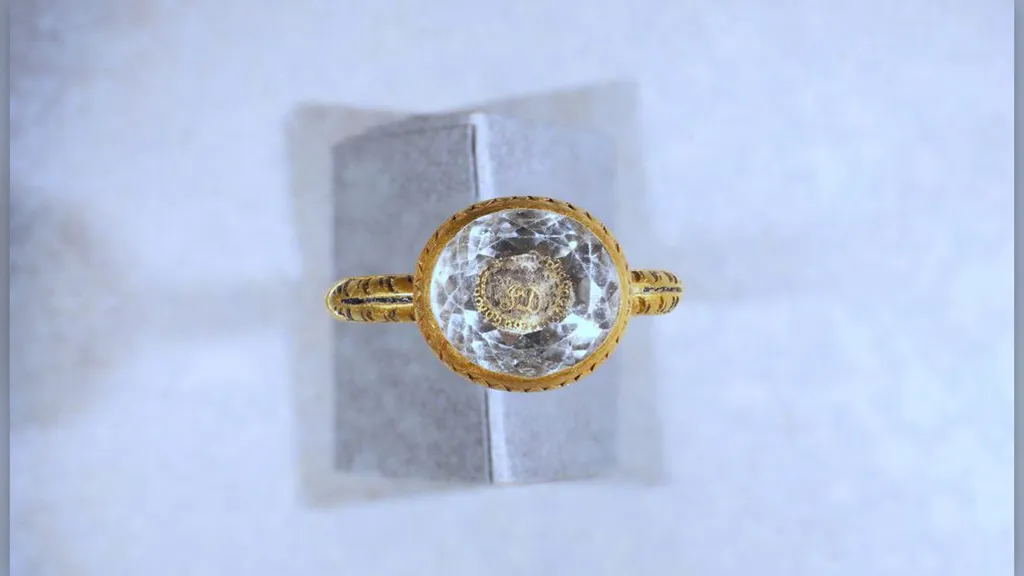A metal detectorist in the United Kingdom has unearthed a 370-year-old gold and crystal ring that might have been crafted in honor of a beheaded earl who lived during the English Civil War.
The slender gold band has a diameter of 0.8 inches (21.5 millimeters) and is topped with a 0.5-inch-wide (12 mm) crystal stone that covers two ornate letters made with gold thread: the initials J.D. (or I.D.), according to Manx National Heritage on the Isle of Man.
If the first letter is a J, that could mean this ring once belonged to James Stanley, 7th Earl of Derby and Lord of Man, a supporter of the Royalist cause during the English Civil War.
Allison Fox, curator of archaeology at Manx National Heritage said, letters and documents from the time show that he signed his name as J Derby, so the initials JD would be appropriate for him.
Moreover, the ring high quality indicating that it was made for, or on behalf of, an individual of high status a profile that fits James Stanley. Metal detectorist Lee Morgan found the ring on the southern part of the Isle of Man, an island between Great Britain and Ireland, in December 2020. The ring has officially declared a treasure a label given to artifacts that meet certain archaeological criteria by the Isle of Man coroner of inquests, Jayne Hughes, on April 19, 2021.
The ring's two shoulders, on either side of the crystal, are decorated with inlaid black enamel. Archaeologists have dated it to the late 1600s and identified it as a Stuart-period (1603-1714) mourning ring, a type of jewelry that was sometimes given out at funerals to commemorate a person who had died, often holding their initials.
James Stanley, also known as Baron Strange and the Great Earl Of Derby, supported the cause of King Charles who ruled England, Scotland, and Ireland from 1625 until 1649 when he was executed. Charles authoritarian rule didn't sit well with the English Parliament, and that animosity eventually led to the series of battles known as the English Civil War (1642-1651).
In this case, the ring was likely made after Parliamentarians executed James Stanley in October 1651, just a few years after King Charles died. Today, there is a historic plaque on the Bolton Market Cross at Churchgate in his memory, saying 1651. James, Seventh Earl of Derby, beheaded near this spot.
James Stanley's wife, Charlotte, Lady Derby, likely had the mourning ring made in his honor. The gold ring will go on display at the Manx Museum.
Can you believe this ring has been buried for over 400 years?!
— Manx Radio (@ManxRadio) April 21, 2021
What an amazing find 😍 @manxheritage pic.twitter.com/vARMacVRB3




0 Comments